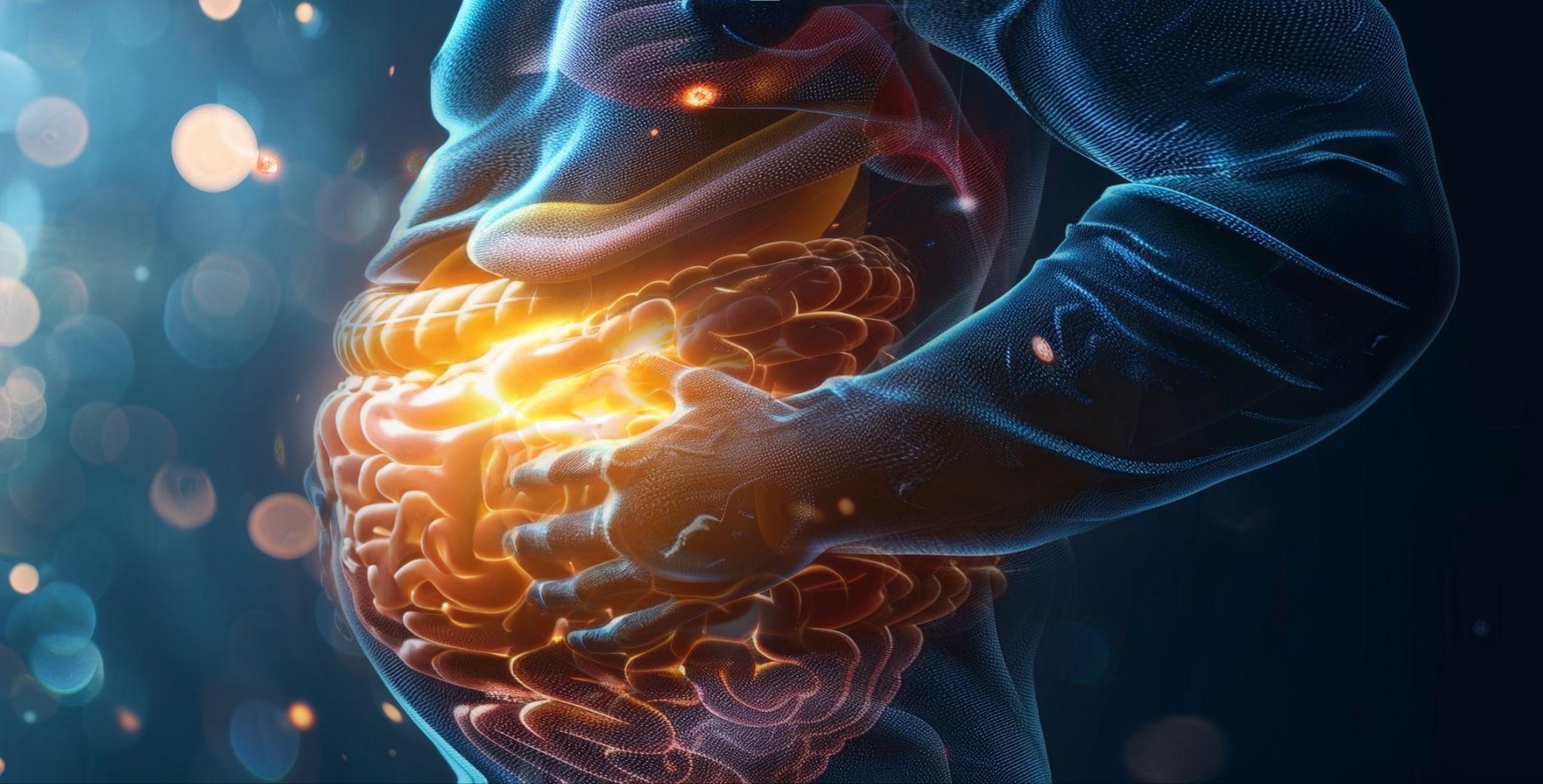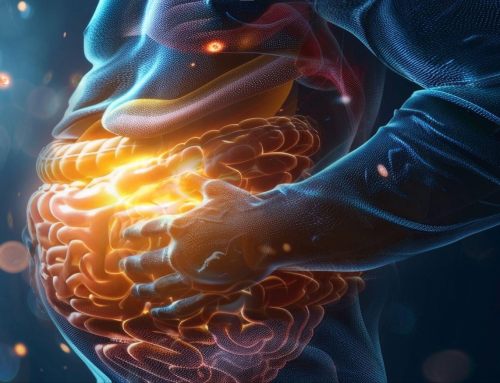The Microbiota-Gut-Brain Axis & Brain Health: Identifying Needs in the Microbiome Research Community
Metagenomics, metabolomics, and whole genome sequencing (WGS) are revealing the exquisite complexity and seemingly boundless opportunities of the microbiota-gut-brain (MGB) axis to positively impact brain health. Advanced research techniques are being developed even as the hardware and software evolve to handle the huge amount of data created by microbiome research. The vast amount of microorganisms in the human gut (the microbiota) and its genetic material (the microbiome) convert raw materials from the diet into a dizzying array of compounds – fatty acids, neurotransmitter substances, and hormones that leave the gastrointestinal tract to act upon remote targets, including the brain.
Study after study is discovering the extent of the story of complex interactions between the diet, the gut, the microbiota thriving in the gut, and the impacts on human health. As researchers wander deeper into the story, the next steps in the evolution of the field of microbiome research are identified.
The researchers in the trenches are identifying challenges and bottlenecks in the current research models, techniques, and tools. Ideas are forming about what needs to be developed to move the field forward. A review published in Cellular and Molecular Life Sciences in 2022 provides a detailed summary of where MGB axis research stands, identifies issues and needs, and enumerates what is necessary to formulate reliable, validated therapeutic and nutritional strategies that impact brain health (1).
The Microbiota-Gut-Brain Axis
The human gut is the area in the gastrointestinal (GI) tract that breaks down and absorbs food, enzymatically whittling foodstuffs to elements small enough for absorption across specialized membranes into the interior of the body. Some molecules do not get absorbed into the body but pass into the large intestine, providing food for the microbiota, which is comprised of over 150 unique species of bacteria and over 20 million microbial genes (2). Upon processing this feast, the microbiota creates byproducts such as hormones, neurotransmitter substances, and short-chain fatty acids (SCFAs). These substances may in turn interact with the enteric nervous system (ENS), a mesh of neurons that have motosensory and other functions, providing a feedback loop via the vagus nerve to the brain. This circuit forms the microbiota-gut-brain (MGB) axis, which has been validated as two-way communication.
MGB Communication Pathways
There are few systems in the body that the MGB does not impact in some way. MGB communication is achieved somatosensorially and chemically through a variety of mechanisms, representing areas of intense interest and study. Metabolites, hormones, and neurotransmitter substances created, processed, or influenced by the microbiota have a wide range of effects on health, including aspects of mental health. The following are various pathways in which the MGB communicates with other systems in the body and impacts brain health (1):
1) Vagal – The vagus nerve provides a physical connection between the gut and the brain. Interestingly, most of the communication goes up from the gut to the brain rather than from the brain to the gut. This is the source of the “gut feeling” that has a basis in physical sensations emanating from the lower GI tract.
2) Immune – Inflammation is one of the connections between the microbiota and the immune system. Neuropsychiatric, metabolic, and neurodegenerative health conditions often have a systemic component of low-grade inflammation which can be driven by an imbalance of the microbiota (dysbiosis).
3) Neurotransmitter or Metabolite-related (direct effects on brain health) – Chemical messengers propagated by nerve cells are neurotransmitter substances. Interestingly, the microbiota creates the neurotransmitters gamma-aminobutyric acid (GABA), tryptophan, serotonin, and dopamine that are capable of crossing the blood-brain barrier (BBB) and influencing mood, cognition, memory, and other aspects of brain health.
- GABA is a neurotransmitter that has an inhibitory action on the brain and can contribute to negative feelings if it is not produced in sufficient quantities. Its dearth is associated with many sensations, such as stress, anxiety, and fear. Low GABA is also associated with the mental health conditions of depression, autism, and schizophrenia. The production of GABA has been directly observed in the bacteria Lactobacilli and Bifidobacterium, both of which can be heavily influenced by diet and dysbiosis.
- Serotonin is a neurotransmitter that is produced from the precursor tryptophan in the brain, influencing appetite as well as mood, cognition, and sleep. Enzymatic actions under the control of the microbiota affect the breakdown or conversion of serotonin to other metabolites, acting as a mechanism of control. It is also suggested that gut microbiota have some influence over the uptake of tryptophan, the precursor to serotonin, and in that way, affect the rate of serotonin synthesis. It’s noteworthy that depression is often treated with selective serotonin reuptake inhibitors (SSRIs), which keep serotonin in the brain synapses longer in a bid to lift mood.
- Dopamine is a neurotransmitter involved in the “reward” system of the brain, creating a pleasurable experience that reinforces certain behaviors, such as those concerning food and sex, for example. A lack of dopamine is associated with addiction, which is essentially an unusual activation or skewing of the reward system. Notably, a dearth of dopamine has also been associated with the mental health condition of schizophrenia. As with serotonin, the healthy microbiota contains bacteria that create or process dopamine.
- The short-chain fatty acids (SCFAs) known as acetate, butyrate, and propionate are metabolites created as a result of certain types of fibers being broken down and fermented by bacteria in the gut. SCFAs can cross the BBB, influencing appetite, stress reactions, mood, metabolism, and memory. There is some evidence that proper levels of SCFAs bolster BBB integrity, helping to prevent conditions that are worsened by a leaky brain barrier, such as Alzheimer’s disease.
4) Neuroendocrine-related – The microbiota can excite the hypothalamus-pituitary-adrenal (HPA) axis, which is one of the primary neuroendocrine feedback loops. Activation of the HPA axis can lead to alteration of emotions and mood, as well as exerting influence on the immune system.
5) Microbiotic, diet-influenced – Colonized by the mother at birth and influenced by her diet, the microorganisms of an infant’s gut co-evolve with the central nervous system (CNS), resulting in a unique microbiota for that individual. Diet and nutrition continue to be highly influential on the microbiota throughout the individual’s life and can create a feedback loop that influences what is desired to be eaten. The sheer volume of communication between the microbiota, the gut, and the brain makes the MGB axis a fertile ground for continued study, especially in regard to brain health.
MGB Importance to Brain Health
Mapping out how to positively influence brain function through the manipulation of the microbiota (via nutrition and other strategies) is a worthwhile endeavor. As the population ages, age-related disorders affecting cognition are also on the rise. Billions of dollars are lost each year to the impacts of mental disorders on society (3).
There is a huge, important role that science can play in identifying specific nutritional supplements or strategies to prevent, reverse, or otherwise influence various health conditions and mental disorders. The possibility of relieving stress, depression, and anxiety in the general population through nutrition is promising. Studies examining the effects of multiple nutritional supplements such as Omega 3s, polyphenols, fiber, and pro-, pre-, and post-biotics are providing clues to “fine-tuning” the microbiota to reinforce and bolster health (1). While incredibly promising, these endeavors are not without roadblocks. As some of these roadblocks impact the quality and applicability of data, it may affect the usefulness to the practitioner who could use the information to treat patients.
Standardized Models and Methods
To be most effective, existing MGB axis knowledge (and how it was obtained) needs to be analyzed to more precisely inform the research efforts going forward. It is obvious now that a multi-disciplinary approach is necessary to encompass the complexity of the MGB as a research topic. A multi-disciplinary approach to improving brain health by manipulating the microbiota through nutritional and therapeutic strategies would then imply some critical dependencies.
Standardized research models and methods and integrating or picking the best from multiple disciplines are vital. Some standards are established and should form the bedrock of future studies: randomization of participants, research designs that include a control group, and studies that can be performed as double-blind. There are some basic established guidelines that researchers can follow, such as the Declaration of Helsinki and the guidelines proffered by Good Clinical Practice (1). These standards are just matters of mastering the basics.
However, there is a need to go way beyond the basics. Studying the microbiota is driving the need for pairing a deep understanding of the anatomy, physiology, and genetics of the microbiota with the creation or modification of models, tools, and methods that rise up to handle the complexity involved. What societal structures do we have that are rising up to this challenge?
In terms of standardization of research models, tools, or methods, the U.K. has the Quadram Institute, a world-renown research center that studies food, the microbiome, and health. Their experiences produced some “best practice” protocols for microbiome research, available online via Creative Commons licensing (4). In the US, the Broad Institute has been applying advanced genomics to the microbiome and participated in the Human Microbiome Project (HMP) and its phase two, the Integrative HMP (both funded by the NIH). As a result of their work, the Broad Institute has been creating tools for and establishing methods of working with the microbiome (5). The Trans-NIH Microbiome Working Group (TMWG) is yet another entity attempting to coordinate microbiome research activities. However, the coordination extends only to NIH-related extramural research (6). The American Society for Microbiology’s task force (7) also endeavors to develop guidelines for microbiome research as a result of consensus. The proliferation of such entities is a hopeful sign for the future.
Indeed, the need for some common guidelines, research models, tools, and methods has spurred mechanisms for meeting regularly, exchanging ideas, and helping to move the field of microbiome research forward via consortiums, conferences, and congresses; some of them international. No doubt, these organizations and meetings will become more important as the field matures, especially if they produce the kind of deep documentation and standardized tools and methods necessary to ease the entry of new researchers and broaden the scope of seasoned researchers.
Apples to Apples – Standardization of Tools and Data
What is desperately needed in microbiome research is the ability to “compare apples to apples.” One place this is crucial is in the capturing of data. The complexity of the microbiota and its repercussions on the human body is so deep, the context so rich, that insight and conclusions will be hindered by databases lacking extensive phenotype data, including details of a participant’s diagnoses and medical treatments or significant physical features. A previous PLMI article details the difficulty of collecting and manipulating large volumes of deep data as well as gives profiles of some current omics tools.
Not only is extensive data capture important, but so is standardization or consolidation of study design with an eye toward reproducibility. Elements of the study need to be comparable to other studies focusing on the same topic for any strong signal to stand out. The Chakrabarti, et al paper argues convincingly for a new research framework that gives “strong guidance on specific areas of the microbiota–gut–brain axis to investigate, which biological samples to collect and the biomarkers or surrogate biomarkers to measure,” and mentions the efforts of the Human Microbiome Project to establish guidelines regarding sampling and analysis (1). Advocating for instituting standard operating procedures (SOPs) regarding the mundanities of collecting, storing, and transporting biological samples, the researchers also call for standards in analyzing, sequencing, and filtering of data. Efforts should be made to bring together research results and allow easy comparisons across studies, such as identifying and classifying comparable groups of study participants (cohorts).
Luckily, there are new tools coming on the scene that are not subjective and utilize biomarkers to objectively identify foods in the diet (1). Objective identification of diet is particularly welcome, because the elephant in the room of microbiome research is the self-reporting of food intake by the study participant. Diet greatly impacts the microbiome, yet self-reporting of the diet is notoriously rife with problems, partly because it relies on the honesty and memory of the participant, both of which can be faulty. Another issue is that broad ranges of potential foodstuffs create huge datasets with numerous variables. There are design strategies to overcome the issue of broad ranges of foodstuffs that do not overlap, such as prescribing a diet or engaging participants who share a household (who are likely to eat many similar foods). However, the issue of self-reporting may still remain in those designs.
Chakrabarti et. al. mentioned the treatment of illnesses by administration of small molecules but did not stress the role of small molecules as microbiome research tools. Certainly, researchers willing to focus on the discovery and identification of gut microbiota, metabolites, and signaling molecules will drive growth in the field. Already, there is a dependency on the supply of small molecules (metabolites, secondary metabolites, inhibitors, etc.) that are appropriately labeled to shorten the prep work for microbiome studies. Likewise, shared biobanks of microbiota-related tissues and new ways of collecting, storing, and using tissue samples would go a long way toward aiding research (1). Without the widespread availability and reasonable cost of small molecules and tissue samples, research of the microbiome would be difficult to accomplish. Having a broad selection of (labeled or unlabeled) small molecule products and tissue samples on standby lends flexibility to and reduces the time to completion of studies. Obtaining small molecules and tissues from the same entity (which produces quality-controlled products) can also help keep variables from creeping into a study.
Keeping Eyes on the Prize
The societal gain from well-applied microbiota research cannot be overstated. There may be areas of research that will not impact society greatly, but microbiota research is not one of them. The fascinating web and the sheer number of feedback loops between the gut, microbiota, and brain promise rich rewards if we truly master the relationships. Monies spent on infrastructure that will support microbiota research will assuredly provide a great return on investment, not only in terms of being able to profit from nutrition products but in terms of a healthier, happier populace.
Sources:
- Chakrabarti A, Geurts L, Hoyles L, Iozzo P, Kraneveld AD, La Fata G, Miani M, Patterson E, Pot B, Shortt C, Vauzour D. The microbiota-gut-brain axis: pathways to better brain health. Perspectives on what we know, what we need to investigate and how to put knowledge into practice. Cell Mol Life Sci. 2022 Jan 19;79(2):80. doi: 10.1007/s00018-021-04060-w. PMID: 35044528; PMCID: PMC8770392.
- Yen S, Johnson JS. Metagenomics: A path to understanding the gut microbiome. Mammalian Genome. 2021;32(4):282–96.
- Mental disorders cost society billions in unearned income [Internet]. National Institutes of Health. U.S. Department of Health and Human Services; 2015 [cited 2023Apr6]. Available from: https://www.nih.gov/news-events/news-releases/mental-disorders-cost-society-billions-unearned-income
- Quadram Institute Best Practice in microbiome research [Internet]. Quadram Institute. 2021 [cited 2023Apr6]. Available from: https://quadram.ac.uk/best-practice-in-microbiome-research/
- The human microbiome [Internet]. Broad Institute. 2016 [cited 2023Apr6]. Available from: https://www.broadinstitute.org/infectious-disease-and-microbiome/human-microbiome
- Trans-NIH Microbiome Working Group (TMWG) [Internet]. National Institute of Allergy and Infectious Diseases. U.S. Department of Health and Human Services; [cited 2023Apr6]. Available from: https://www.niaid.nih.gov/research/trans-nih-microbiome-working-group
- ASM leads support letter for microbiome research working group and strategic plan update [Internet]. ASM.org. [cited 2023Apr6]. Available from: https://asm.org/Articles/Policy/2023/March/ASM-Leads-Support-Letter-for-Microbiome-Research












